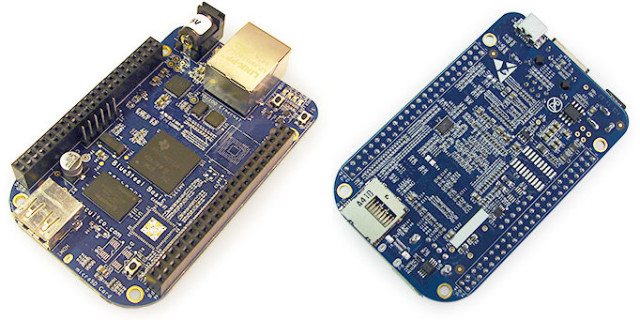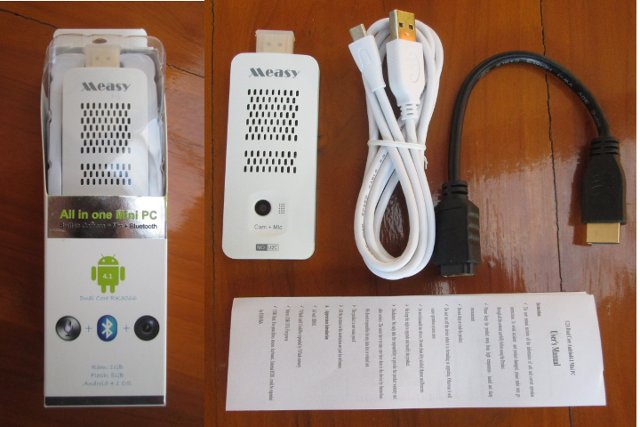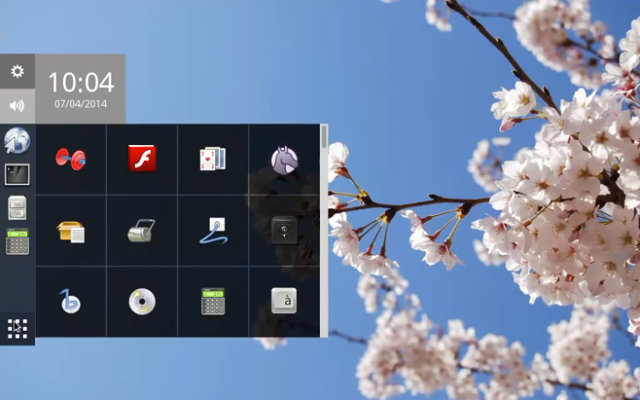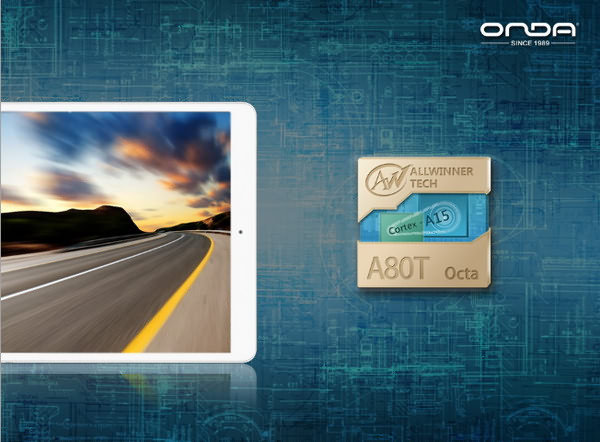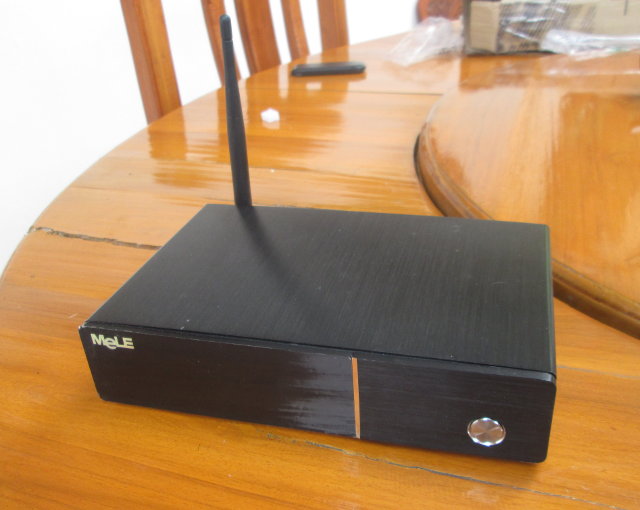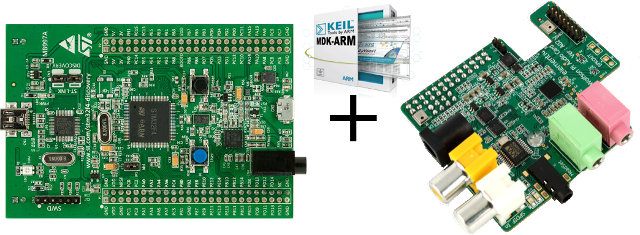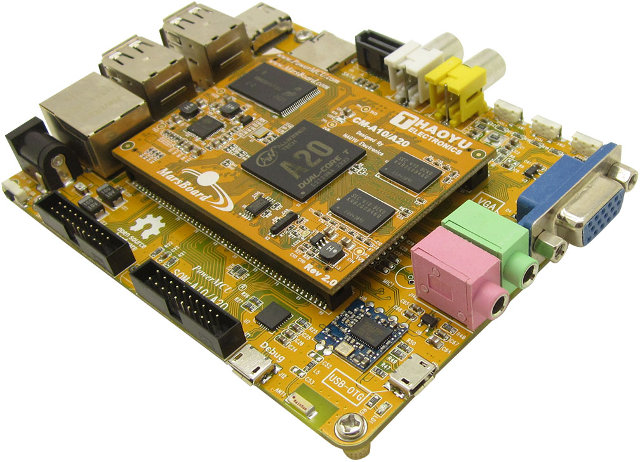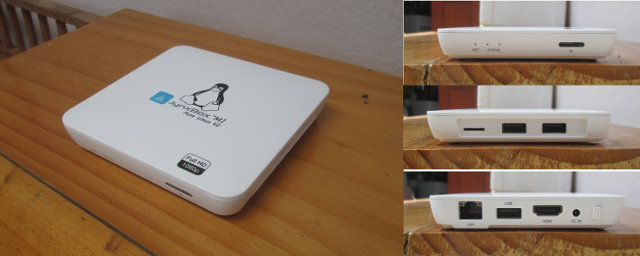CircuitCo has just introduced BlueSteel-Basic, a development board based on the Beaglebone Black but with a Blue PCB, no HDMI output, and no eMMC flash that’s destined to be used by OEMs in their products. LinuxGizmos also reports that BlueSteel-Basic is to be followed by BlueSteel-IT, an industrial temperature grade (-40 to 100°C) board based on the Beaglebone Black, and Bluesteel-Core, a computer-on-module (CoM) based on Ti Sitara AM335x that are scheduled for July 2014. Let’s checkout BlueSteel-Basic specifications: SoC – Texas Instruments Sitara AM3358BZCZ100 @ 1GHz (2000 MIPS) with PowerVR SGX530 3D GPU (20M Polygons/S) System Memory – 512MB DDR3L @ 800MHz Storage – micro SD slot Connectivity – 10/100M Ethernet (RJ45) USB – 1x USB 2.0 host port, 1x mini USB 2.0 port Debugging – Serial header and optional on-board 20-pin CTI JTAG Expansion Connectors Signals: Power 5V, 3.3V, VDD_ADC (1.8V) 3.3V I/O On All Signals McASP0, SPI1, […]
Giveaway Week – Measy U2C Android TV Dongle
Measy U2C, aka B12, will be the prize for day 3 of Giveaway week. It’s an HDMI & AV TV dongle powered by Rockchip RK3066 SoC with 1GB RAM, 8GB flash that happens to feature a 2MP camera for video conferencing as well. It’s running Android 4.1.x Jelly Bean. When I reviewed Measy U2C at the beginning of last year, I had some issues with USB mouse and keyboard support, the firmware could have been more stable, and the Antutu scores seem a bit on the low side, but Wi-Fi and video playback were both very good. It has received one or two firmware update since then, which may have fixed some of the bugs. The last firmware update must have been in April or May 2013, so it has not been a device greatly supported. To enter the draw simply leave a comment below. Other rules are as follows: […]
Maynard is a Wayland based Lightweight Desktop Environment Designed for the Raspberry Pi and Lower-end Hardware
With 3 millions board already sold, the Raspberry Pi board is clearly the most popular ARM Linux development board, and must be one of the most successful Linux device that’s designed to run a Desktop environment. However, the Broadcom BCM2835 processor and lowly 512MB makes it hard to run fully fledge desktop environment such as KDE and Gnome, so most people run LXDE via Raspbian operating systems, and it is much more manageable. However LXDE does not support Wayland, which is supposed to replace the X windows system, and it may not look as nice as it could. So the Raspberry Pi foundation and Collaborra have worked together on a new desktop environment called Maynard that leverages Wayland, and is supposed to be “functional, light and pretty”. This Wayland implementation is based on Weston + GTK, and is using the hardware video scaler (HVS) found in Broadcom BCM2835 to make […]
Onda V989 Tablet Powered by AllWinner A80T Achieves Close to 50,000 Points in Antutu
Teclast T97 was one the first tablet based on AllWinner A80, an octa-core CortexA15/A7 big.little processor with PowerVR G6230 GPU. It was announced way too early last December… There’s now another tablet much closer to an actual retail availability called Onda V989 featuring AllWinner A80T with a 9.7″ display and 2 or 4 GB RAM that come close to the top of the Antutu scoreboard with 48102 points. Unfortunately that’s all we know about this tablet at this stage. I’m not sure what A80T means, AllWinner A80 Tablet version?, or AllWinner A80 Turbo, with higher clock frequencies? There has also been some sort of silly season with benchmark related to AllWinner A80 with scores ranging from 23674 to 48102 points in Antutu as shown below for Onda V989. The low score was achieved when A80’s Cortex A15 cores were allegedly clocked at 1.2GHz , but it should be closer to […]
Giveaway Week – Mele X1000 Blu-Ray Navigation Android TV Box
For day 2 of Giveaway Week, I’ll list Mele X1000, an higher-end Android 4.4 Kitkat TV box with a metallic enclosure, and powered by Telechips TCC8935 dual core Cortex A9 SoC with 1GB RAM, 4GB flash, HDMI and AV outputs, an external SATA connector, Ethernet and Wi-Fi, as well as a few USB ports. The selling point of this box is that it can handle Blu-Ray navigation in XBMC. Since my review of Mele X1000 in March, the company has released new firmware via OTA updates, so the box has certainly improved. At the time of the review I found the hardware build to be of high quality, Wi-Fi performance to be really excellent, that it indeed supported Blu-ray ISO, and provided lots of advanced settings for video playback, but I could notice some unstabilities, XBMC was not pre-installed, SAMBA and NFS were not working, and some videos could not […]
ARM Introduces DSP ‘Lab-in-a-Box’ For Education Combining STMicro STM32F4-Discovery Board and Wolfson Audio Card
DSP (Digital Signal Processing) courses at University have traditionally used software simulation packages (Matlab), or hands-on labs using development kits costing around $300 per student. In order to reduce costs, ARM University program and their corporate partners have launched a DSP ‘Lab-in-a-Box’ so that university students can learn DSP and audio systems with hardware selling for about $50, or over 80% cheaper than previous educational hardware. A typical DSP Lab-in-a-Box (LiB) would come with: STMicroelectronics ARM Cortex-M4-based STM32F4 Discovery MCU board Wolfson Microelectronics and Farnell element14 Wolfson Audio Card. ARM Keil MDK-Professional development tool with a 1-year renewable software license. Teaching materials such as lecture slides, code samples, and hands-on lab manuals. STM32F4-Discovery board features an STM32F407VGT6 MCU (ARM Cortex-M4F core) with 1 MB Flash, and 192 KB RAM, sensors (motion and accelerometer), a digital microphone, and audio DAC, a micro USB connector, and various buttons and LEDs. The Wolfson […]
There’s a New MarsBoard A20 ARM Linux Development Board In Town
MarsBoard, a development board based by AllWinner A10 was released last year, soon followed by MarsBoard A20 with a dual core Cortex A7 AllWinner A20 processor. That board is now called the “Old MarsBoard A20” and is replaced by the “New MarsBoard A20” that features a baseboard + computer-on-module design, increases the NAND flash capacity to 8 GB flash, and supports 1GB RAM by default, with an option for 2 GB RAM. Let’s check the specifications of this new development board: SoC – AllWinner A20 ARM Cortex A7 dual core processor @ 1GHz + Mali-400 GPU System Memory – 1GB DDR3 @ 480 MHz by default, up to 2GB DDR3 Storage – 8GB NAND Flash, SATA II interface, and micro SD slot Video I/O HDMI up to 1080p60 VGA Composite output TV-IN (composite IN) LCD connectors for RGB and LVDS interfaces, capacitive touch support Audio I/O – HDMI, Line In/Out, Microphone […]
Giveaway Week – Jynxbox M1V2 Pure Linux XBMC
When Theaterinabox sent me a Jynxbox M1V2 for review, I was a little surprised to actually receive two. The reason was that I got one for review, one for giveaway. But since I need to drive to the post office anyway, I’ll just giveaway both, and actually start a giveaway week giving 8 different boxes to my readers starting today with the two Jynxbox M1V2, then one a day until Sunday. Let’s talk about the device a bit more. Jynxbox M1V2 is one of the few Linux based XBMC available on the market. It’s based on Amlogic AML8726-M3 Cortex A9 processor, with 1GB RAM and 2GB flash, with several XBMC add-ons pre-installed. You can read my review to get the detailed specs, and pictures. The conclusion of my testing was that the user interface was pretty smooth considering the low end processor, Wi-Fi was excellent, and I was pleasantly surprised […]


